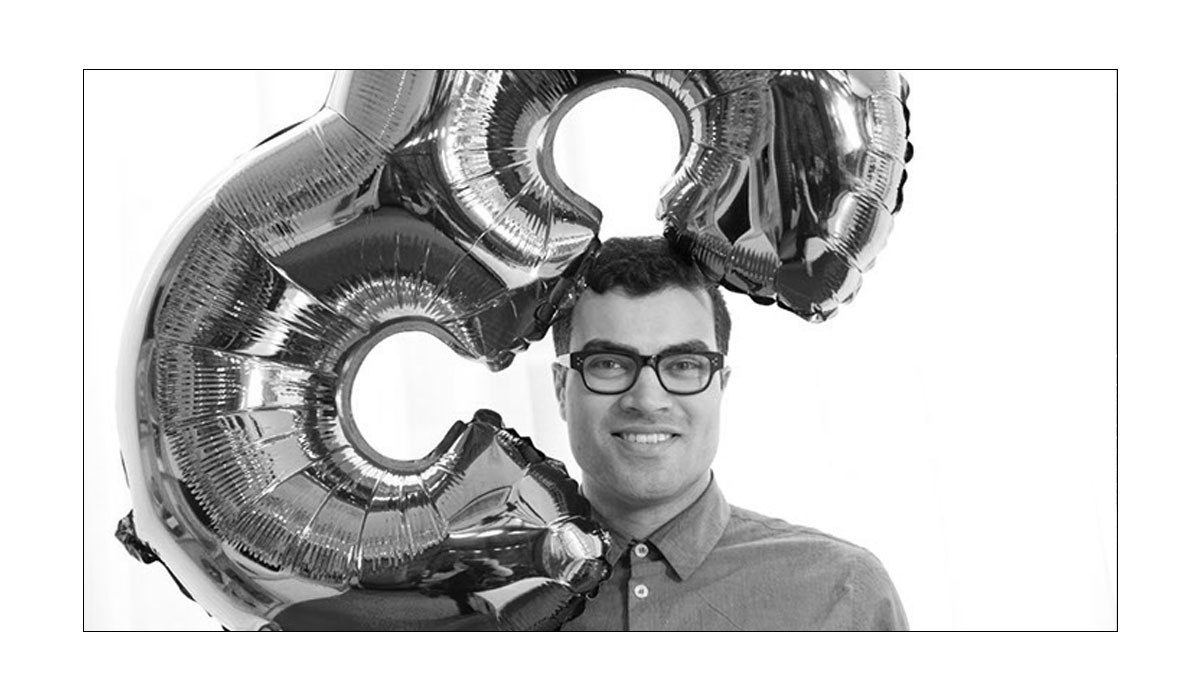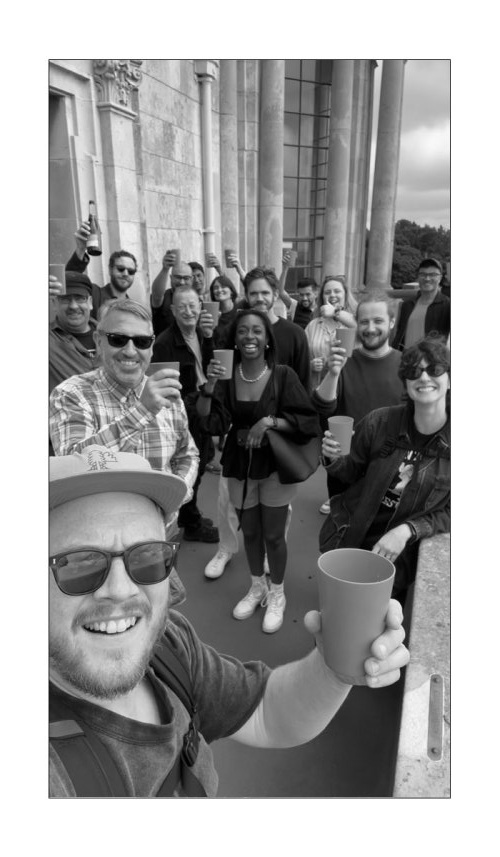15 years of Soundtracking Space | How Open Ear Has Revolutionised Music Curation
The first flickers of Open Ear Music came to life during an experiment I carried out 20 years ago.
As part of my academic research, I tested a group of participants to see if music could affect how quickly they completed a maze in a darkened room. The fastest times were recorded when the rapid-fire techno of Detroit pioneer Jeff Mills was played and the slowest were when there was silence.
These findings gave me the inspiration to start considering music in a quantitative way and this idea of how sound influences the way we behave has sustained Open Ear ever since.
From these initial experiments and subsequent experiences, it’s glaringly obvious how music is ubiquitous in our everyday lives. Sounds, their frequency, volume and tempo, can really shape our actions, which is why we’re constantly bombarded with messages and content from ad brands. We might think of ourselves as visual beings but we’re actually always listening and taking in information through our ears. They never blink.
Initial hearings
A combination of factors were behind the launch of Open Ear back in 2007. My academic explorations were in the field of psychology, with a final dissertation on the impact of music on Parkinson’s sufferers alongside other musical experiments.
A Masters in Sound Design followed, while at the same time, I regularly DJed and produced as Auntie Flo, enjoying firsthand experience of how people responded to my musical selections, whether taking it in actively on a dancefloor or passively while drinking or eating. It was in the middle of a DJ set in a bar when ideas around the Open Ear concept and the opportunities of music curation began to spark.
At the time, I loved playing music that people had never heard or didn’t expect and wondered how I could ‘DJ’ all week long rather than just four hours on a Friday night. I thought there must be companies that specialise in offering this but after some initial research this whole area seemed fairly lacking. There were a handful of ‘background music’ companies but I was surprised at how little they seemed to emphasise psychology or even the music itself.

After I was accepted onto NESTA’s Creative Pioneer programme, a business incubator for the creative industries, I used their support to create a business plan for Open Ear. I started travelling all over Glasgow, acting as a conduit between record labels and local businesses in a bid to bring this concept to life and supply music to shops and bars. My first client - the Lighthouse, Scotland’s centre for design and architecture in central Glasgow - was typical of many organisations that had never considered the impact of their soundtrack on its customers. I made agreements with Glaswegian labels such as Soma and Chemikal Underground to provide a bespoke playlist of local talent.
When we started, I went to many businesses and most of the time they were just playing chart music or the staff would be messing with the song selection so it was constantly changing. There wasn’t really any creative approach to the curation or any consideration for its impact on the customer which was something I really wanted to change.
The Open Ear Approach
Historically, music and sound design have been considered a poor relation when compared to a business brand or the amount invested in interior design. However, as music consumption has changed, tastes have widened as increasingly esoteric musical realms have become accessible and the value of music to businesses has grown louder.
I’ve always seen Open Ear as an extension of my DJ sets in digging a little deeper to uncover exciting sonic gems and offer spaces unique soundtracks. I’ve approached curation by trying to be as creative as possible and find amazing tracks that can stand on their own merits. The skill of curation is about cultivating an environment that will help a business tell its story in an authentic way and we believe this is important at whatever stage of the experience - from when an empty room fills to when the crowd leaves. Providing the right ambience for the duration of the stakeholder experience continues to be the ultimate challenge in this sector.

The world we now live in is very different to that of 15 years ago where our access to culture, new concepts and technological experiences are more instantaneous and sophisticated. Yet, many studies have been released to bolster the credibility of Open Ear’s original idea and illustrate the power of music when deployed in different settings. A survey by research body Mindlab in 2014 showed that 88% of people were at their most accurate - and 81% at their fastest - when music was playing. Almost two-thirds of workers listen at work to make them happier and more productive. In a 2007 study, Nicolas Gueguen found that playing classical music in a wine store increased sales, even influencing consumers to choose more expensive bottles.
I believe this type of curated music service has hugely improved since we started the business. It’s partly due to niche sounds becoming more widely available and consumers having broader tastes as they’re not as hellbent on consuming mainstream music. Ultimately, people value music more and I’d like to think Open Ear has led the way in pushing this form of music forward.
Curators
The Open Ear methodology is driven by our community of curators who live and breathe the company’s taglines of offering music ‘handpicked by humans’ and ‘playlists with personality’.

From myself to the likes of journalist Kate Hutchinson and fellow London DJ Jonjo Jury, our selectors are united by the scope of their musical knowledge and passion for unearthing new sounds, then sharing them with the wider world.
A business should see our community as a trusted source capable of guiding them to find music they might never have heard before. It’s all about trust and we do what we can to ensure we match a company with the best possible curator who can select tracks that speak to a brand and the tastes of its customers.
Having travelled all over the world as a DJ, I have always been constantly surprised by how many peers I’ve met offering similar music curation services to businesses alongside their club gigs. It means Open Ear’s coterie of music lovers has grown in an organic, global way in line with my own career as a selector. The resident DJ always seems to be offering playlist curation on the side for their friends’ businesses. One of my aims is to help them deliver a more professional service and expand our community across the world.
Clients
Open Ear’s Customer Connect service builds on the expertly tailored playlists by evolving the relationship between a brand and its customers. From take-home playlists to embedding a ‘now-playing’ display widget on a website, it means we can offer clients such as Wahaca, Dr Martens, and Selfridges a holistic music strategy to help them tell a genuine story.

Selfridges have been an amazing client for us as their flagship London base is a big beast of a store with almost 30 independent retailers where we’ve been faced with programming music for each space. As part of Birmingham's 2022 Commonwealth Games Celebrations, Selfridges gave customers the chance to play their music via a bespoke jukebox app built by our in-house team. Visitors could choose what to play from a wide range of sounds, from seventies classics all the way to contemporary hits, as well as a dedicated selection of tracks by Brum’s music legends. It’s the latest exciting chapter in a long-standing relationship between our business and the flagship retailer.
Their most recent campaign was Super Futures and explored what the commerce of tomorrow might look like. They gave us a selection of playlist briefs around certain themes. We then had to come up with some quirky and fun soundtracks that could sit alongside their high-end fashion brands.

The Future of Open Ear
We’ve gone through so many challenges. From Covid to economic slumps, as a business, all we’ve known is crisis and we’ve managed to navigate these obstacles successfully. 15 years is a long-time for a small business to weather so many storms but despite this significant milestone, I’m keen to look towards what might be next for Open Ear. One significant change is the way the music industry is now beginning to recognise the value of the playlist in providing a platform for emerging and established artists to generate more revenue from their music.
We’ve always existed outside the mainstream music industry but now it has started to come towards us. Labels and PRs are beginning to reach out and ask that music be added to a playlist. They now recognise the value of their artists being played in restaurants, bars and shops.
Health and wellbeing is another potential area of growth for our business. More than ever, people are looking to use sound for relaxation, escapism, clarity and healing and the company has responded to this by launching Swell. Our sister company works with spa and well-being businesses to ensure sound is used effectively in these environments. It is a positive use of music that is reflected in how businesses can utilise what they play to improve staff morale and the customer experience.
I see Swell as a core part of Open Ear’s future. It shows the benefits of music when used for good and offers something far more powerful than what the term ‘background music’ suggests. Ultimately, I believe music is the glue that companies have to bring people, whether it be staff or customers, closer together. And that’s something we want to pursue and define further in the future.